The Splitting Maul vs. Axe, If you need to start chopping wood from a huge pile, you need the right tool. Choosing between a maul and an axe can be hard work since they are similar. Each tool has advantages and disadvantages that you can consider before deciding which is good for you.
Below we have explained the nitty gritty of a splitting maul vs. axe, their differences, and other pointers to help you make your choice.
What Is a Splitting Maul?
Individuals use a splitting maul to split logs into two pieces or for woodcutting. The maul is strong enough to split wood in just one strike, which makes it perfect for tough wood. Has a long handle and a large head, perfect for tough wood fibers. It is better suited for heavy jobs such as cutting large stumps and rounds. It is also best for chopping hardwood such as maple, ash, oak, and birch.
The weighs about 6 to 8 pounds; it may be more difficult to handle than a splitting axe, but it can easily cut through larger logs. Mauls have a hammer-like shape on their bottoms, used to drive wedges into the log or stakes into the ground.
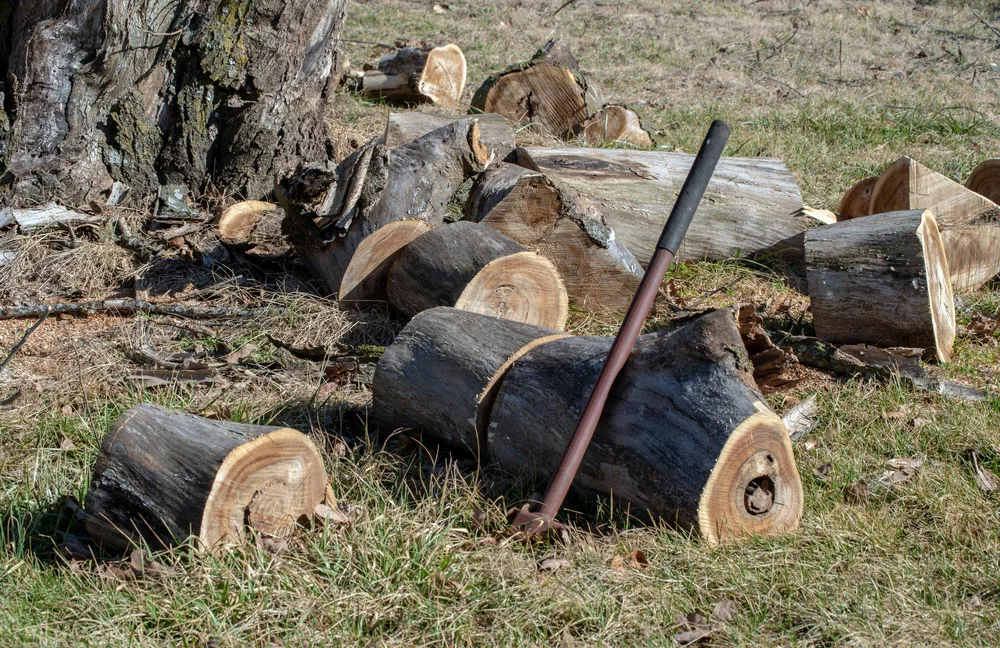
(splitting maul)
What Is a Splitting Axe?
A splitting axe is a cutting tool with an elongated head made of metal and is significantly lighter than a maul. Splitting axes are easier to lift, which leads to controlled swings. It is also easy to learn how to swing an axe.
The splitting axe has a long history as it was the best option for cutting wood for a long time. This is why people like the splitting axe, as it has been a trusty tool for cutting wood.

(man chopping wood)
Differences Between Splitting Maul VS Splitting Axe?
Both tools may look the same at first, and many individuals refer to one as the other. However, these tools differ in both their function and features.
Below we have summarized the differences between the maul and the axe.
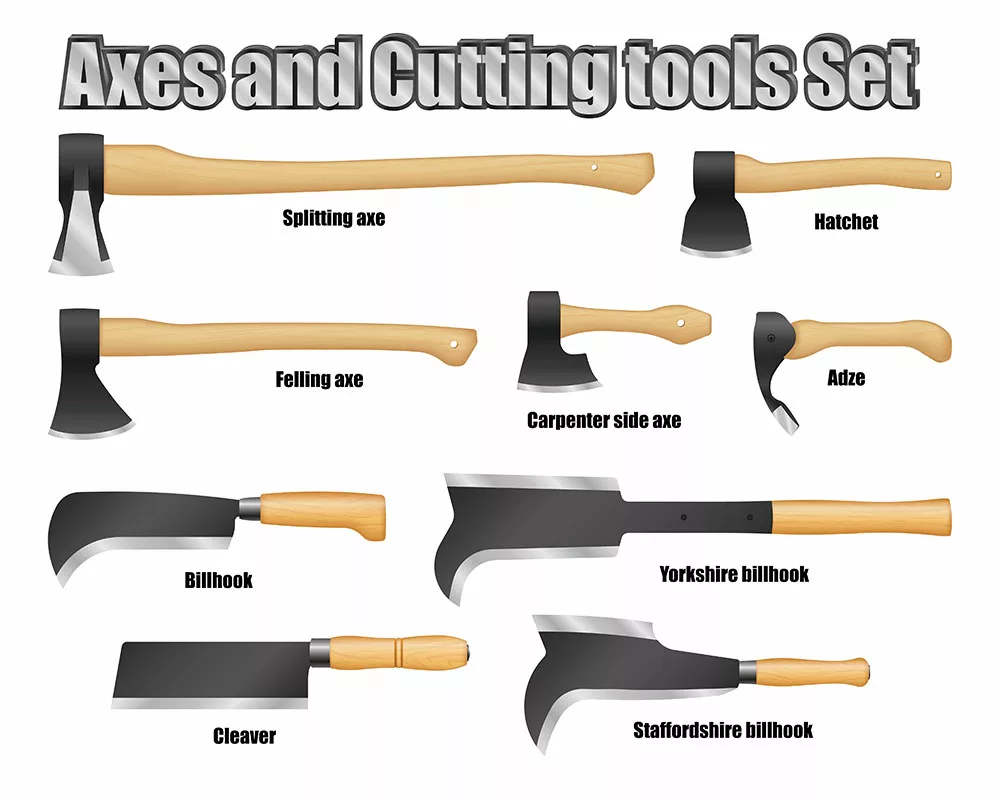
(Different types of Axes and Cutting tools)
The Handle
Splitting mauls have a longer handle than the axe to balance the heavy weight of the head and shaft. The long handle is also suitable for easily detaching the blade from a log. Since it is longer, the handle is not close to your lower body, reducing the chance of injury. Maul handles are made from metal, plastic, or fiberglass.
A splitting axe handle is made from wood or other composite materials. Composite handles are made to last longer and are lighter than wooden handles. The axe’s handle is a few inches short of the maul’s handle.
*Useful tip! If the tool has a handle of your arm’s length, it is a splitting axe, not a maul.
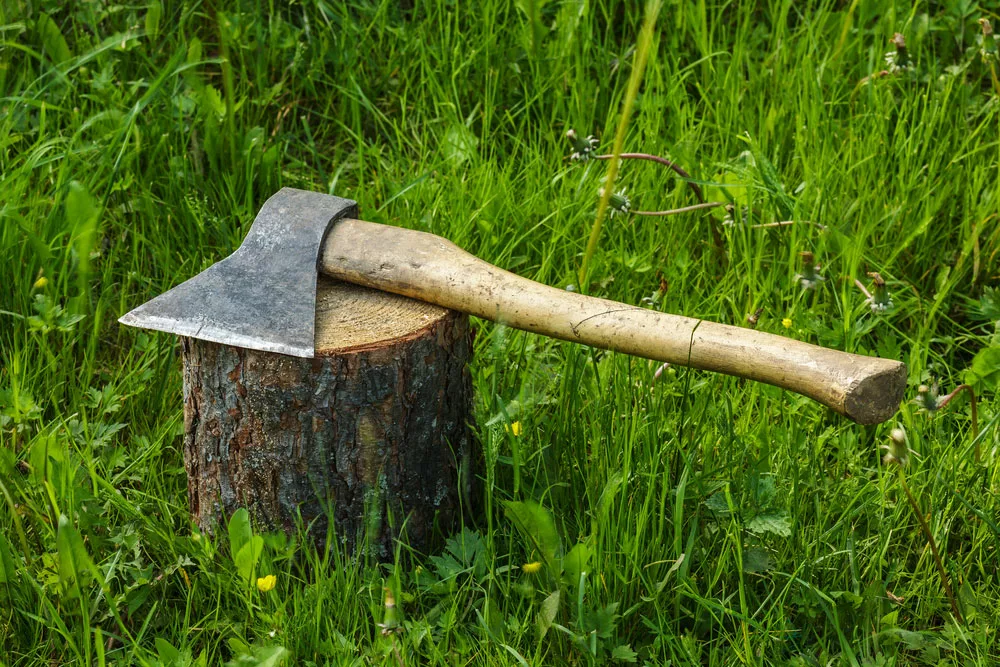
(an axe on a stump)
Head Design
A splitting axe has a sharper, lighter head compared to the maul. The axe is flat on the other side of the blade, so you cannot use it as a hammer. Axe heads are constructed from copper, iron, or stainless steel. These metals have a low risk of getting rusty.
Splitting mauls have flat, blunt, and long heads. It is usually made from heavy-duty iron. It has a short cutting edge with a wedge shape. The blade and pole side have a hammer-like shape, making it easy to do hammering tasks.
Weight
A maul is very heavy compared to a splitting axe. Since it has a huge hammer-like head, it contributes to the overall weight of the maul. A splitting maul weighs about 6 to 8 pounds on average.
The splitting axe, on the other hand, weighs about 3 to 6 pounds, depending on the size you choose. Individuals who regularly cut firewood for camping or burning in their fireplace usually prefer splitting axes.
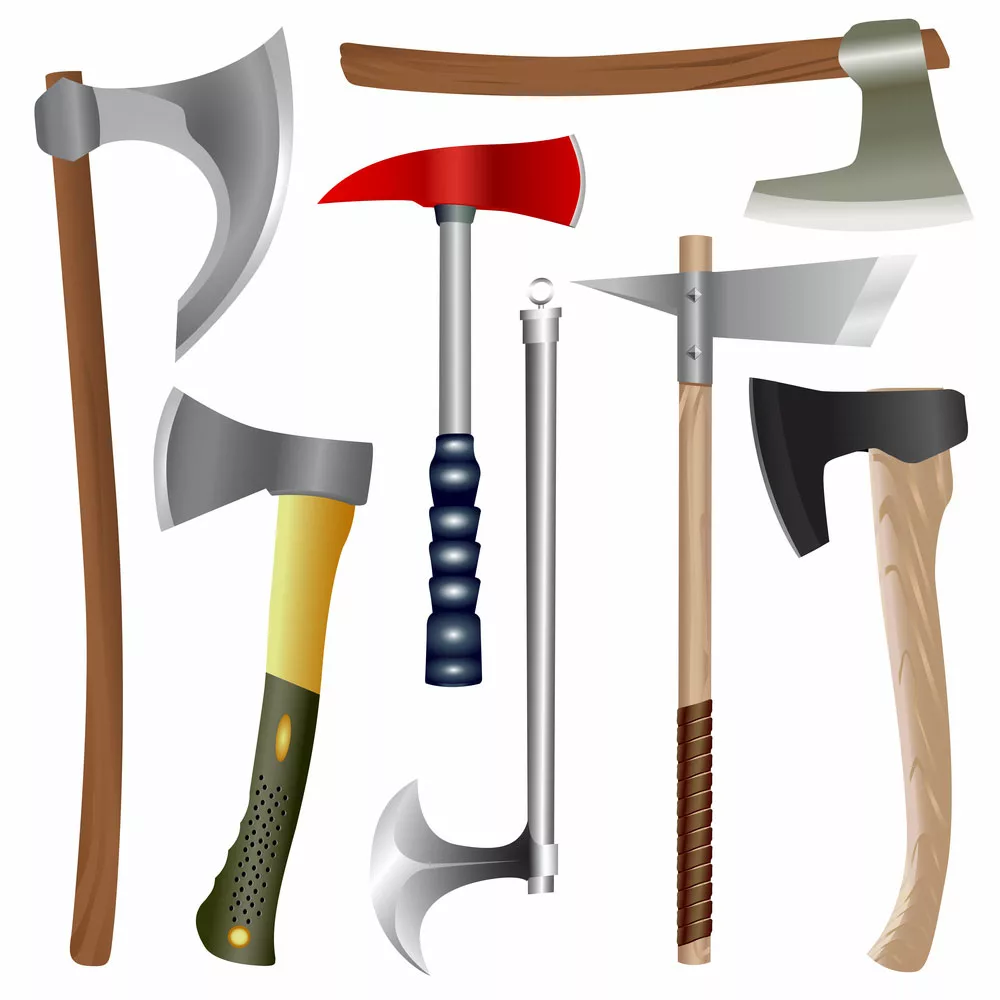
(Different axes set)
Usage
Individuals use the splitting axe commonly to split wood for camping or fireplaces. The compact head and small handle are perfect for cutting wood easily, so you do not experience hand pain. You may see splitting axes with oval-shaped, slightly curved handles for a better grip.
Mauls are used to split heavy and thick wood. Since it is so heavy, it makes it easy for the maul to go through the wood. One strike of the maul is enough to tear wood into two pieces. However, it increases the risk of painful wrists. Therefore, individuals should only use the maul for heavy-duty work.
Price
Splitting axes and mauls have wide price ranges. The price will depend on the material it contains. A maul is much more expensive than a splitting axe.
A high-quality splitting maul with a long handle, good materials, and an edge can cost more than $250. However, if you do not need a large head or handle, you can get a maul for $40.
Splitting axes can cost as little as $15, but they are low-quality, so that the axe may lose its edge quickly. It can also result in the head becoming detached from the handle.
Higher-quality axes can be on the market for $100 to $150, which is still significantly cheaper than a maul.
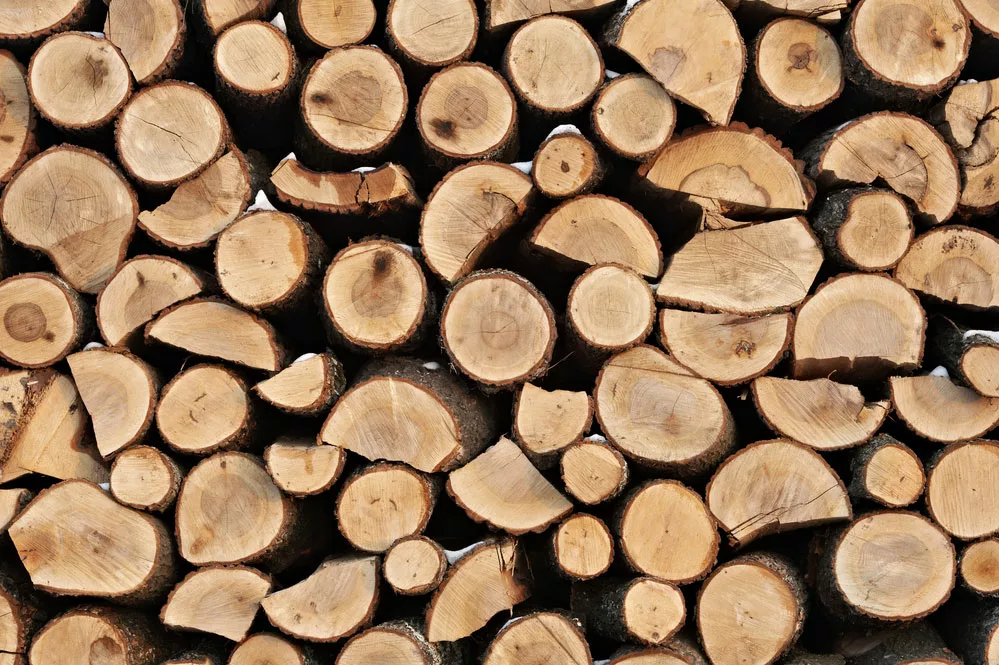
(chopped wood)
Maul VS Axe for Splitting Wood: What Should I Choose?
The debate between the splitting maul vs. axe ultimately depends on your preference. To choose the perfect tool, you must determine how much work you plan to do and what size of wood you’d work with.
Larger pieces and tough wood would call for a maul, as a splitting axe will not be able to split the wood. If you only want to cut smaller, softer wood, then a splitting axe would be the better choice. The axe is good for individuals who cannot handle the weight of the maul.
Basically, for heavy-duty jobs, opt for the maul. Lighter tasks for firewood call for the axe.
Conclusion
The splitting axe has impressive features but caters to lighter wood chopping, whereas the splitting maul is more heavyweight with a hammering side for hardwood and other heavy tasks.
Knowing the differences between the splitting axe and the maul makes it easier for you to choose. It will also eliminate the frustration of buying a tool you cannot use.
